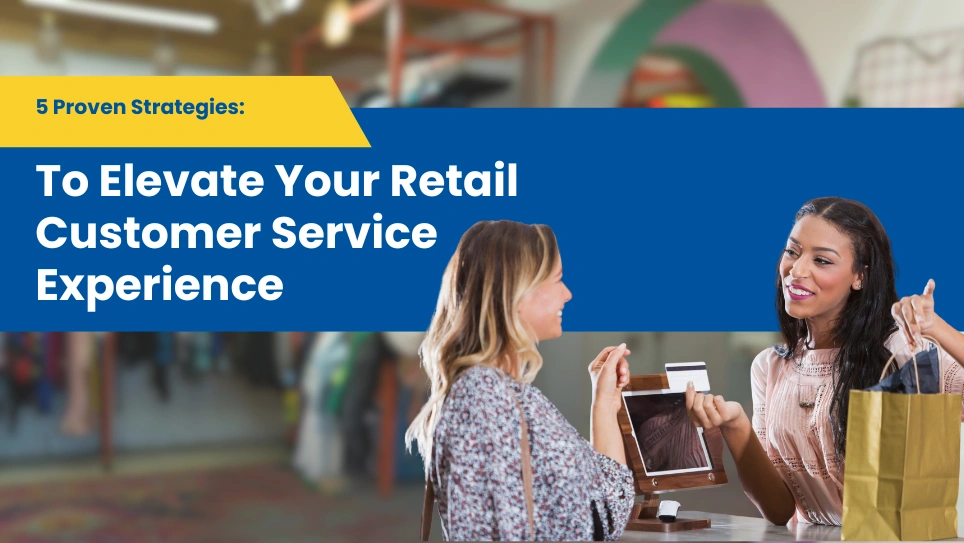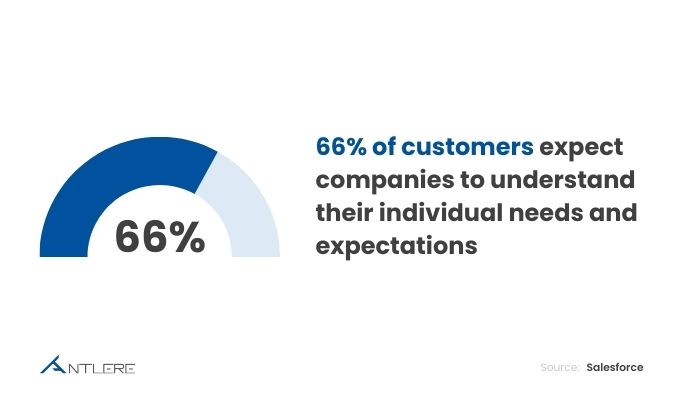

5 Proven Strategies to Elevate Your Retail Customer Service Experience
You walk into a store and within seconds you know whether you will stay or walk out. Your questions answered quickly, finding a product effortlessly, and getting that initial smile from a staff member are all part of your retail customer service experience. In the highly competitive marketplace that we find ourselves today, products alone cannot win a battle. Customer service in retail is a key differentiator between brands.
But before we go to the strategies in detail, let us first revise the fundamentals: what does retail mean?
Specifically, retail is the practice of selling goods and services directly to consumers(classes). Whether it is through major retail department styles, fostering your own brand and online shop, or any other platform, it was always about satisfying customers, offering helpfulness, and loyalty. Retail services cover not just sales, but also shop customer service, delivery, and after-sales support.
We will go through 5 tested approaches to improve your retail customer service experience, with examples, statistics, and insights into retail customer meaning and expectations.
Understanding the Retail Customer
A retail customer is any individual purchasing goods or services for personal use, not for resale. Their expectations are evolving, they want speed, personalization, and convenience.
Companies in the retail business, such as Walmart, Amazon, and Target, have become new role models for customer expectations by providing friction-less shopping, on-demand retail call center support, and powerful loyalty programs.
As a matter of fact, 66% of customers expect companies to understand their individual needs and expectations according to Salesforce, which makes retail customer management integral to retail success of the modern day.

Strategy 1: Train Teams for Exceptional Shop Customer Service
Your employees are the face of your retail brand. Through retail sales and store support staff or through online retail support agents, this ability to connect with customers can make or break the experience.
Why Training Matters
- Sales conversion increases by as much as 40% with staff which have the right interpersonal skills.
- Training for retail IT support helps employees answer technical or billing questions immediately.
- Cross-training of physical stores and digital channels cultivates uniformity of retail customer services across platforms.
Retailers like Apple do particularly well here: their in-store team are trained not only in the product, but also in how to deliver an experience that stays with the customer.
Strategy 2: Use Technology to Personalize Retail Customer Services
As retail & consumer services software picks up pace businesses can use data to personalize the experience. Recommendations tailored to the individual, loyalty apps and AI powered chat support can all make the customer feel as if a retailer “knows” them.
Retail Example: On Amazon 35% revenue driven by recommendation engine based on browsing and purchase history. That’s personalization at scale.
The same goes for contorted small retail business examples. Using CRM integration along with retail call center data, companies can quickly identify repeat shoppers, resolve concerns at a much faster pace, and create a better loyalty.
Strategy 3: Omnichannel Retail Support
Today, customers do not differentiate online from offline, they look for a seamless journey. This is where omnichannel retail support comes into play.
Scenario 1: A prospect browses some products from an online catalog, reaches the retail call center for some query, and ultimately buys from the store. The customer will have to repeat themselves if the data is not linked, resulting in annoyance.
Customer Experience Improvement in Retail Store Integrate touchpoints. Ensure a seamless system across all channels, websites, mobile apps, brick-and-mortar stores.
Channel | Customer Expectation | Retail Example |
In-Store | Quick checkout, helpful staff | Walmart’s self-checkout kiosks |
Online | Easy navigation, personalized offers | Amazon’s “Customers Also Bought” |
Call Center | Fast resolutions, empathetic agents | Best Buy’s retail customer services |
Mobile App | Loyalty rewards, order tracking | Starbucks Rewards App |
This model builds a uniform retail customer service experience regardless of how the journey starts.
Strategy 4: Collect and Act on Feedback
One of the most underrated elements in your retail customer management arsenal is a proactive feedback loop. Customers just want to be listened to and loyalty doubles when they witness businesses applying their feedback.
But to untap those insights could be through voluntary surveys, calls after purchase, or engaging with them on social media. A clothing retailer, for example, might gather feedback about seasonal collections, while a retail IT support team might find out how easy checkout technology was to use.
Retailers examples like Zappos, built their reputation by not just collecting feedback but turning it into action whether by improving shipping processes or adjusting return policies.

Strategy 5: Empower Customers with Self-Service
Sometimes the best kind of service is providing customers with the tools with which they can serve themselves. Be it through retail number tracking to provide updates on food delivery in India or knowledge bases, self-service driven by retail & consumer services software puts customers in control whilst lightening the load on staff.
Key Benefits of Retail Self-Service
- Quick Resolutions: Customers get their queries resolved on the spot, instantaneously with no waiting time.
- Less Repetitive Questions: Support teams in retail only face a subset of the questions
- More Control for Customers: Order information, returns, and helpful information are available 24/7 to shoppers!
For instance, retail businesses such as IKEA combine self-service online and within the store, using such tools as “track your order” and warehouse-style furniture collection points.
Why Elevating Retail Customer Service Matters
At its core, what’s retail if not about creating value for customers? Whatever the case, retail customer service looks a whole lot different today than it did even a few generations ago what has changed is that politeness is no longer enough, but rather the expectation has been set for consistent, data-centric, and tailored experiences.
And research shows that 73% of customers say customer experience is not just a key factor, but one of the most significant deciding factors that ultimately influences purchasing decisions, even ahead of price or product quality in many cases.
Retailers that follow through with practices such as training, personalization, omnichannel, feedback loops, and drive self-service do not merely enhance satisfaction but create loyalty and brand advocacy.
Conclusion: Building the Future of Retail Experience
The retail scene is shifting quicker than ever before, if any firm continues to neglect the retail customer service experience, they place themselves at a danger of getting left behind. From how we sell and support stores, to retail call centers, to digitally-first retail support, businesses need to meet the new expectations for how fast, personalized and free-flowing customer experiences can be.
Some brands are starting to invest in retail- and customer- management systems, smarter technology, and better-trained staff to improve every customer touch point. In the increasingly competitive marketplace, it is those who effectively adopt these five ways that will win customers and their loyalty out of everyone else.
Retail customer service excellence in 2025 and beyond will not be a differentiator – it will be table stakes for sustainable growth.



